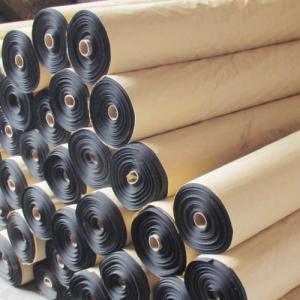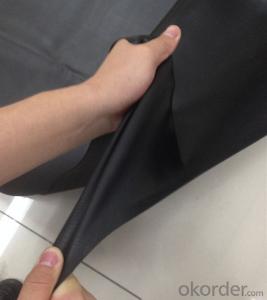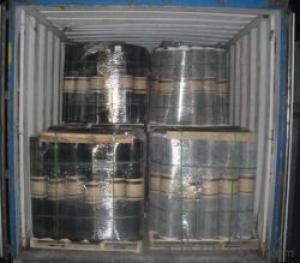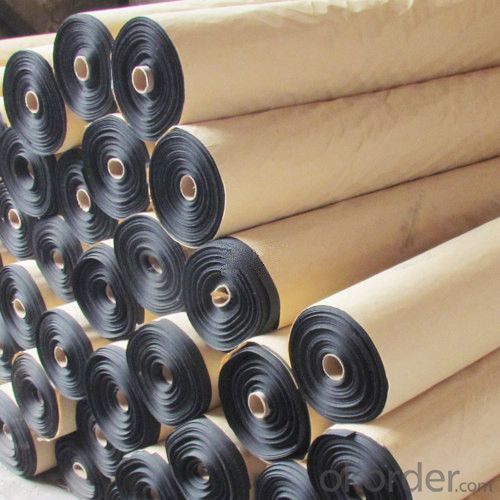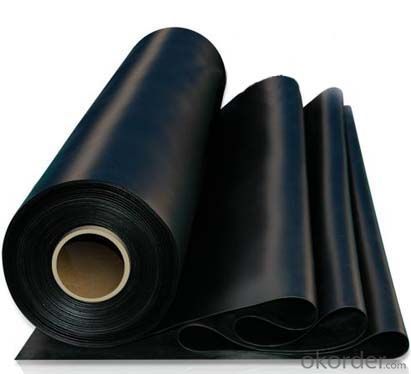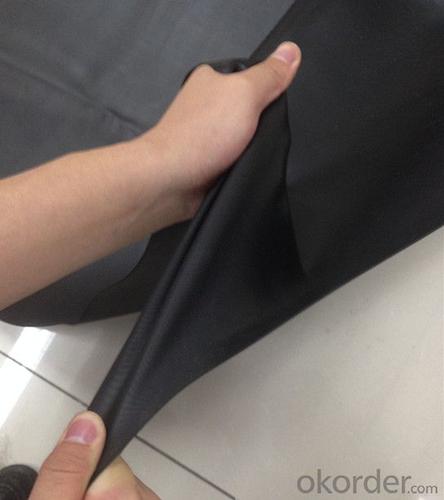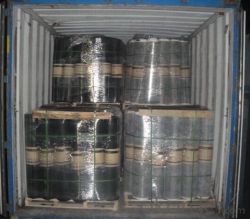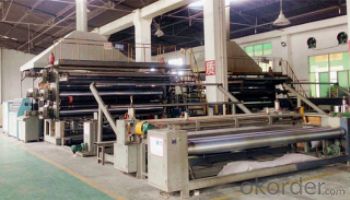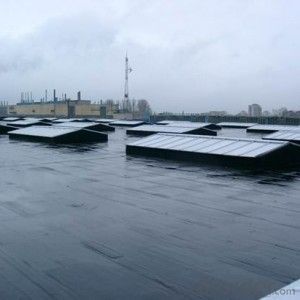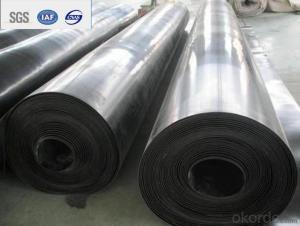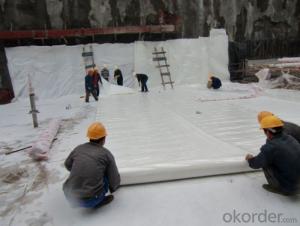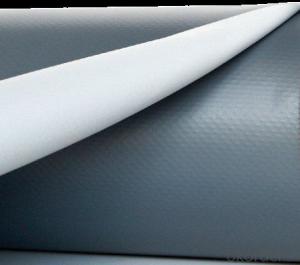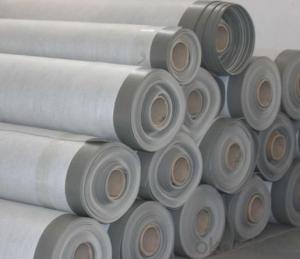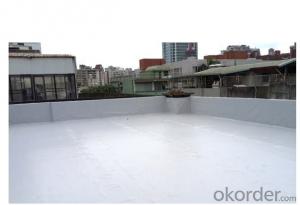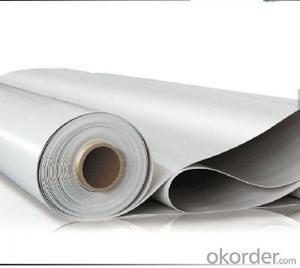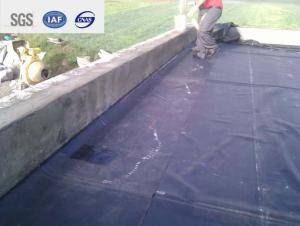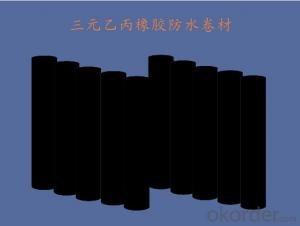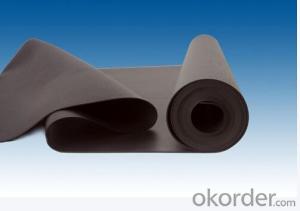Single Layer Roofing Vulcanized EPDM Waterproof Membrane Black Color for Roof and Basement
- Loading Port:
- Qingdao
- Payment Terms:
- TT or LC
- Min Order Qty:
- 3000 m²
- Supply Capability:
- 250000 m²/month
OKorder Service Pledge
OKorder Financial Service
You Might Also Like
Vulcanized EPDM Rubber Waterproof Roofing
Vulcanized EPDM rubber waterproof membrane for roof
Width: 1.2m.2m.3m,4m
Length: 20m
Thickness: 1.2mm/1.5mm/2.0mm
Color: Black
Profile of Vulcanized EPDM Waterproof Membrane :
Durability and ease of installation are two of the key reasons .
Single ply EPDM Roof systems are becoming commonplace in today flat roofing market. EPDM membrane is a flexible rubber material available in 45 mil, 60 mil and 90 mil thicknesses. With its superior flexibility, resistance to fire and high strength, EPDM can be applied in all sorts of climates.
1. EPDM waterproof membrane is made from ternary ethylene-propylene rubber, which is for waterproofing of exposed and non-exposed applications.
2. CNBM EPDM waterproof membrane production adopts the world-advanced equipment of cold feeding extrusion and continuous vulcanization technology.
3. EPDM waterproof membrane is of high elasticity among high polymer waterproof materials and a world-popular waterproofing material.
Features of Vulcanized EPDM Rubber :
1.The excellent anti-aging, in the long term light, humidity, cold use of the natural environment, small changes in physical properties, used in the temperature: From -50 degree Celsius to +80degree Celsious.
2. With outstanding ozone resistance, resistance to ultraviolet and atmospheric corrosion of many chemical corrosive substances.
3. High tensile strength, high elongation, high flexibility, capable of sustaining a puncture of hard material, good anti-crack, high adaptability of the grass roots' contraction and the crack and deformation, and give full play to extend the performance, playing the role of waterproofing.
4. Long lifetime, high durability can achieve more than 25 years.
5. The cold construction operation, no environment pollution and simple operation.
Applications of Vulcanized EPDM Rubber :
-Roof, basement, tunnel, pond liner, dam
-Industrial and civil building waterproofing
-Geosynthetic liner for fish ponds, swimming pools, channels, irrigation system
-Especially suitable for projects with high requirement in durability, anti-corrosion and deformation
Widely used in roofs, basement, toilet ,swimming pool, and all kinds of industry and civil building waterproofing, reservoir, vivicism, bridge, underground, tunnel and dam waterproofing ,especially to the keystone waterproofing projects which is durability, high corrosion resistance and easy deformation.
Specifications of Vulcanized EPDM Rubber :
-Width of roll: 1.2m, 2m, 4m
-Length of roll: 20m, 30m or customized
-Thickness of membrane: 1.2mm, 1.5mm, 2mm
-Type: vulcanized EPDM or welding EPDM
-Application: roof, basement, pond, lake, swimming pool, steel structure roofing, underground, tunnel, etc
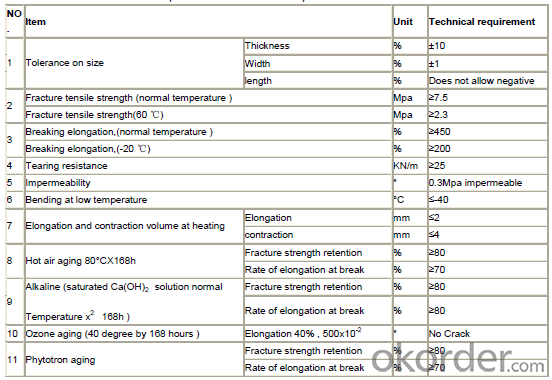
FAQ:
1. Is your EPDM waterproof membrane the real rubber?
Yes, our EPDM membrane is made from top quality rubber, which is imported from America. We support samples for testing, or testing in our factory.
2. How's your products quality?
Our EPDM is with the top quality at home and abroad. Our quality is much higher than Chinese standard. Our product is widely used in Chinese Central government projects. And it's also accpted by customers all over the world, such as EU, USA, Astrulia, etc.
3. What's the service life of your EPDM membrane?
The service life of our EPDM membrane is more than 50 years.
4.What's your MOQ?
Our MOQ is 3000M2.
5. What's your production ability of EPDM membrane?
We own the largest EPDM production line in China. Our product ability of EPDM membrane reaches 2 million square meter per year.
6.How many quantity in one 20'' container for 1.2mm and 1.5mm?
480rolls, 11520m2 for 1.2mm and 400rolls, 9600m2 for 1.5mm
Photos of Vulcanized EPDM Membrane:
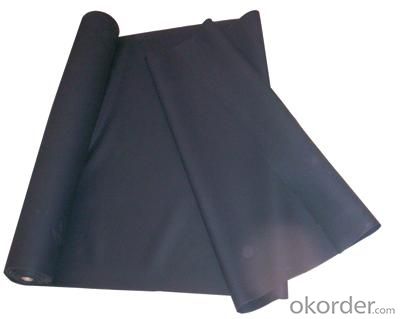
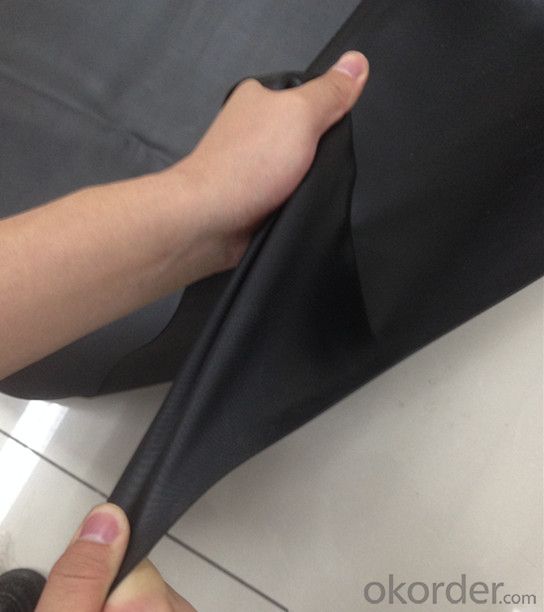
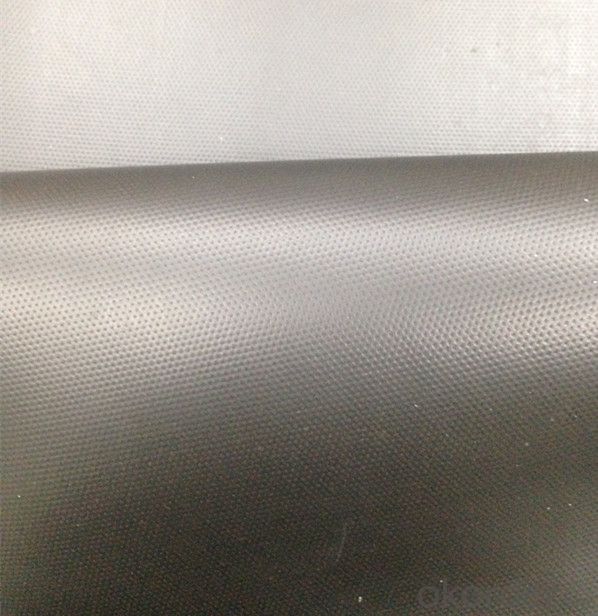
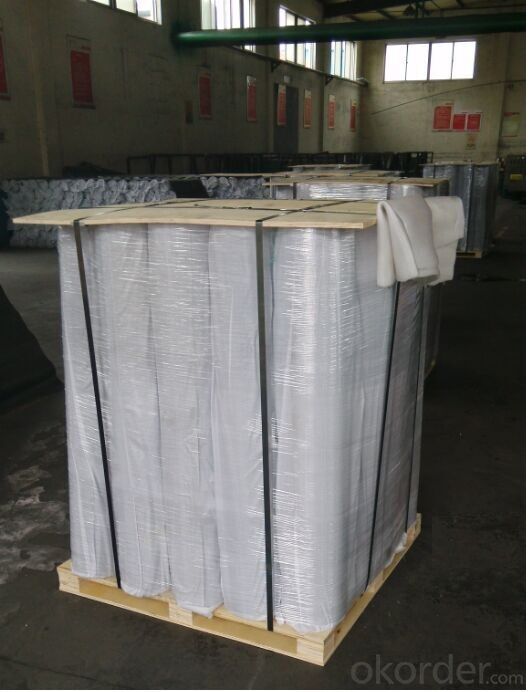
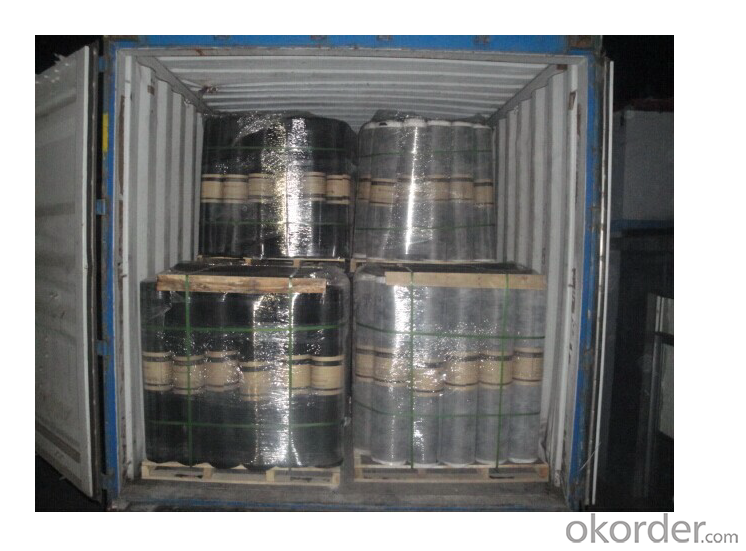
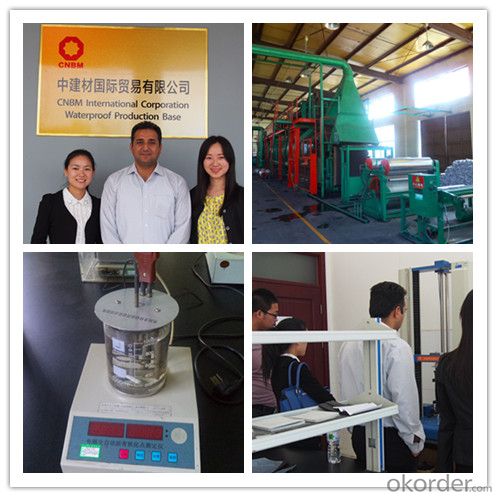
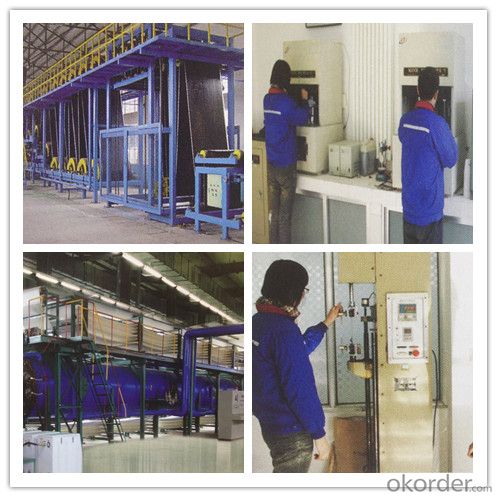
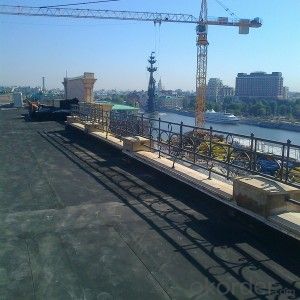
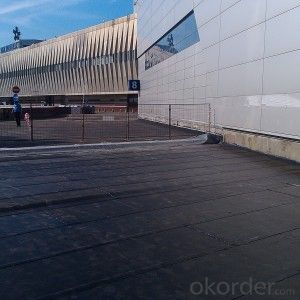
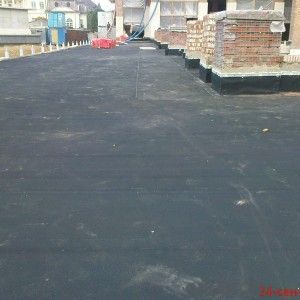
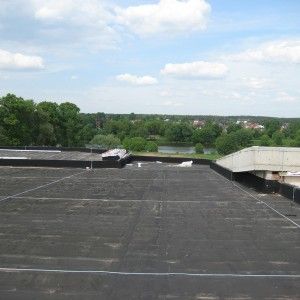
- Q: The shortcomings of polypropylene waterproofing, and the shortcomings of modified asphalt waterproofing membrane
- Waterproofing membrane in the waterproof construction in accordance with the shape of the waterproof base of the bulk of the truncated, for the complex shape of the grassroots need to multi-block splicing, waterproofing membrane overlap at each other more difficult, due to the impact of multi-block splicing waterproof Layer of beauty; then completely completely sealed will become the main problem, the biggest hidden dangers, the most opportunities is the coiled parts of the coil; then high-grade waterproofing membrane with decades of durable durability,
- Q: Is a waterproofing membrane resistant to hydrocarbons or oils?
- Yes, a waterproofing membrane is generally resistant to hydrocarbons or oils. The materials used in waterproofing membranes, such as bitumen or synthetic polymers, are typically designed to have high resistance to various chemicals, including hydrocarbons and oils. This resistance helps to ensure that the membrane remains effective in preventing water penetration even in the presence of these substances. However, it is important to note that the specific resistance level may vary depending on the type and quality of the waterproofing membrane. It is always recommended to consult the manufacturer or supplier to determine the exact resistance capabilities of a specific waterproofing membrane.
- Q: Can a waterproofing membrane be applied on top of roofing materials?
- Yes, a waterproofing membrane can be applied on top of roofing materials. In fact, this is a common practice in the construction industry. The primary purpose of a waterproofing membrane is to provide an additional layer of protection against water infiltration, which is especially important in areas prone to heavy rainfall or where the roof is exposed to extreme weather conditions. By applying a waterproofing membrane on top of roofing materials, it creates a barrier that prevents water from seeping through the roof and causing damage to the underlying structure. Additionally, depending on the type of waterproofing membrane used, it can also provide added insulation and improve the overall energy efficiency of the building. It is important to note that proper installation and adherence to manufacturer's guidelines are crucial to ensure the effectiveness and longevity of the waterproofing system. Therefore, it is recommended to consult with a professional roofing contractor or waterproofing specialist to determine the most suitable membrane and installation method for your specific roofing materials and conditions.
- Q: Can waterproofing membranes be used on both horizontal and vertical surfaces?
- Yes, waterproofing membranes can be used on both horizontal and vertical surfaces. Waterproofing membranes are designed to provide a barrier against water penetration and can be applied on various surfaces, including roofs, walls, floors, and even underground structures. They are versatile in their application and can be used to protect both horizontal surfaces such as flat roofs or balconies, as well as vertical surfaces like walls or foundations. The flexibility and durability of waterproofing membranes make them suitable for a wide range of construction projects, ensuring that water does not seep through and cause damage to the structure.
- Q: Can waterproofing membranes be used on swimming pool decks?
- Yes, waterproofing membranes can be used on swimming pool decks to protect them from water damage and leaks.
- Q: Can a waterproofing membrane be used for a retaining wall drainage?
- Using a waterproofing membrane is an effective method for retaining wall drainage. Typically used to prevent water from penetrating structures like basements or foundations, this membrane can also serve as a barrier against water seepage in retaining wall construction. Retaining walls are designed to hold back soil and prevent erosion, but without proper construction, they can be vulnerable to water damage. If water seeps through, it can create pressure behind the wall, causing structural problems over time. By installing a waterproofing membrane on the backside of the retaining wall, water infiltration into the soil and accumulation behind the wall can be prevented. Furthermore, a waterproofing membrane can help with the drainage of water away from the retaining wall. By incorporating drainage systems like weep holes or French drains, alongside the membrane, water can be directed away from the wall, reducing hydrostatic pressure and potential damage. It's important to note that while a waterproofing membrane can be used for retaining wall drainage, proper installation and compatibility with the specific retaining wall system and conditions are crucial. It's recommended to consult with a professional engineer or contractor experienced in retaining wall construction to ensure the most suitable approach for your specific project.
- Q: Can a waterproofing membrane be applied to concrete surfaces?
- Yes, a waterproofing membrane can be applied to concrete surfaces.
- Q: How does a waterproofing membrane handle expansion and contraction of a surface?
- A waterproofing membrane is specifically designed to accommodate the expansion and contraction of a surface. It is composed of flexible materials that can stretch and contract without compromising its integrity. This allows the membrane to move with the surface, preventing any cracks or damage that could lead to water infiltration. The membrane is typically installed with overlapping seams, creating a continuous barrier that can expand and contract as needed. These seams are often reinforced to provide additional strength and durability. Furthermore, the membrane is usually applied in multiple layers, which adds to its flexibility and ability to handle surface movement. In addition to the material composition, the installation process is crucial in ensuring the membrane can handle expansion and contraction. Properly trained professionals will consider the specific conditions of the surface, such as temperature fluctuations and structural movement, and install the membrane accordingly. They may use techniques such as hot-air welding or adhesive bonding to create a secure and flexible bond between the membrane and the surface. Overall, a waterproofing membrane is designed to accommodate the natural expansion and contraction of a surface. Its flexibility, reinforced seams, and multi-layer construction allow it to move with the surface without compromising its waterproofing capabilities, ensuring long-term protection against water infiltration.
- Q: Are there any limitations to using a waterproofing membrane?
- There exist certain limitations when using a waterproofing membrane. To begin with, although waterproofing membranes are successful in preventing water penetration, they do not always serve as a solution for structural problems that may result in leaks. In the presence of underlying issues with the structure, such as cracks or gaps in the foundation or walls, solely relying on a waterproofing membrane may not sufficiently address the problem. Furthermore, the installation of a waterproofing membrane necessitates thorough surface preparation, which can be time-consuming and expensive. The surface must be meticulously cleaned, dried, and cleared of any debris or contaminants for the membrane to adhere properly. Inadequate surface preparation may lead to improper adherence of the membrane, potentially causing it to fail in providing effective waterproofing. Moreover, waterproofing membranes are prone to damage during installation or afterwards if not adequately maintained. The membrane can be punctured or torn by sharp objects or heavy equipment, thereby compromising its effectiveness. Regular inspections and maintenance are imperative to ensure the membrane remains intact and in good condition. Additionally, waterproofing membranes have a limited lifespan and can deteriorate over time. Exposure to UV radiation, extreme temperatures, or harsh chemicals can degrade the membrane, reducing its ability to prevent water penetration. Regular inspections and potential replacement may be necessary to uphold the integrity of the waterproofing. Lastly, not all structures or environments are suitable for waterproofing membranes. Certain membranes may not be compatible with specific substrates or may not withstand high hydrostatic pressure. It is crucial to consult a professional and select the appropriate membrane type for the specific project and conditions. In conclusion, while waterproofing membranes can effectively safeguard structures from water damage, it is essential to acknowledge their limitations and ensure correct installation and maintenance to optimize their performance.
- Q: Can a waterproofing membrane be used for basements and crawl spaces?
- Basements and crawl spaces can benefit greatly from the use of a waterproofing membrane. To safeguard against water damage and moisture-related problems, it is highly advisable to employ a waterproofing membrane in these areas. The waterproofing membrane functions as a slim layer of material that is applied to the walls and floors of basements and crawl spaces, establishing a barrier against water and moisture infiltration. This technique effectively keeps the area dry and averts water seepage, which can lead to structural deterioration, mold growth, and various other complications. Waterproofing membranes are built to be resilient and enduring, offering a dependable solution for safeguarding basements and crawl spaces against water intrusion.
Send your message to us
Single Layer Roofing Vulcanized EPDM Waterproof Membrane Black Color for Roof and Basement
- Loading Port:
- Qingdao
- Payment Terms:
- TT or LC
- Min Order Qty:
- 3000 m²
- Supply Capability:
- 250000 m²/month
OKorder Service Pledge
OKorder Financial Service
Similar products
Hot products
Hot Searches
Related keywords
